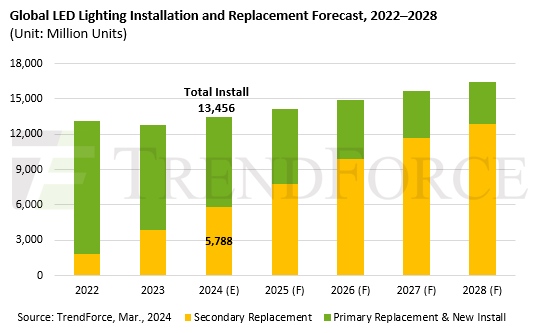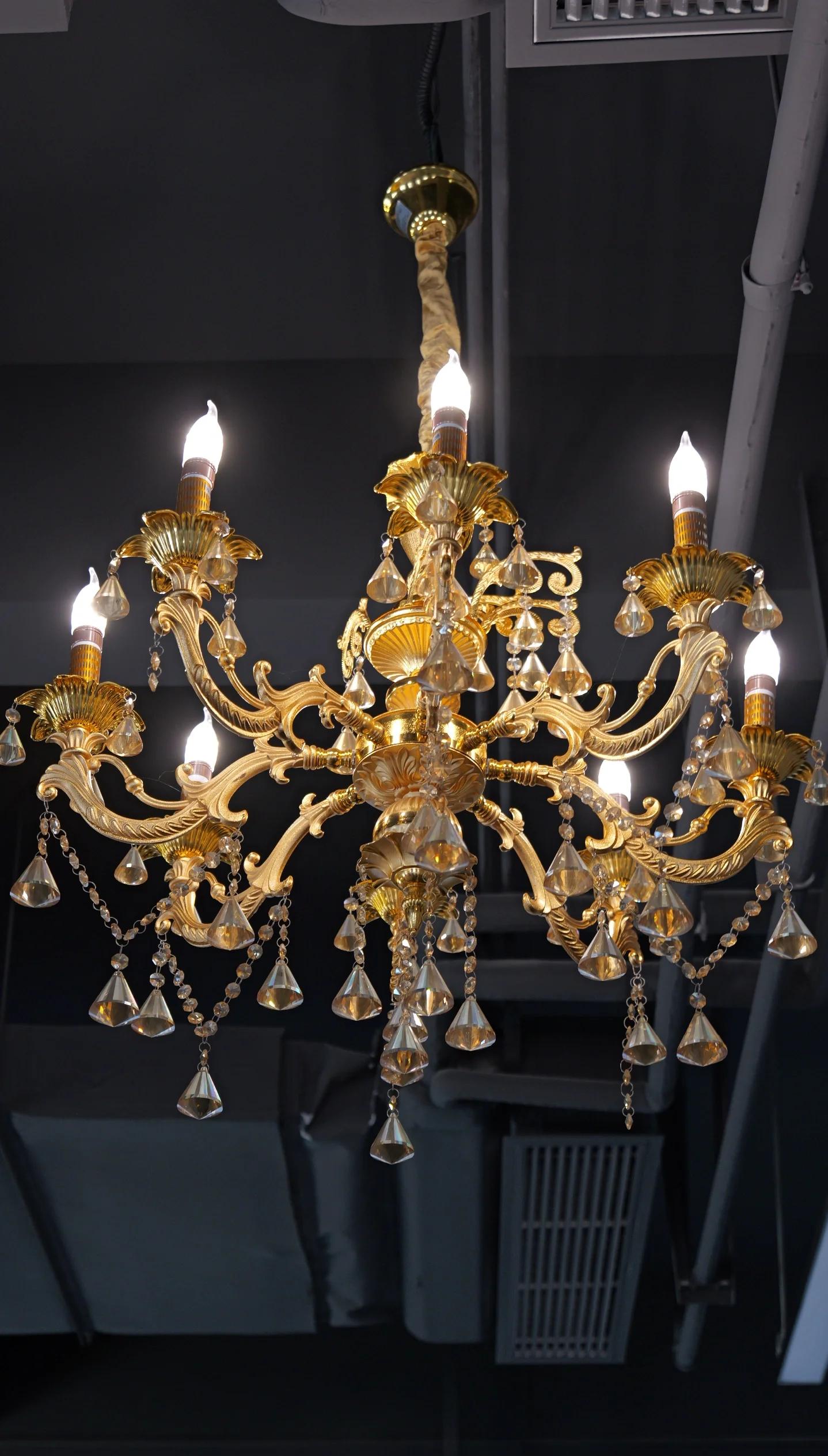Currently, LED lighting products account for up to 70% of the global lighting market, which greatly limits the space for traditional lamps to be replaced by LED alternatives. Today, only a few specific and unique application areas still rely on non-LED lighting solutions, leading to rising transition costs for the lighting industry and suggesting that the first round of LED lighting product replacement cycles may be nearing the end. Although the shipment volume of LED lighting products will decline to a certain extent in 2023, thanks to the gradual rise of secondary replacement demand, the decline is not too significant. At present, this demand has become the core driving force for the sustainable development of the LED market.

It is predicted that the secondary replacement demand for LED lighting will reach its peak between 2025 and 2028. The design life of LED lamps is usually 25,000 to 40,000 hours, which is equivalent to an actual service life of 7 to 10 years. According to TrendForce's estimates, LED lamps installed between 2014 and 2016 have gradually reached their life limit starting in 2023, which will drive the demand for secondary replacement year by year. This trend is expected to continue to drive the expansion of the lighting market over the next five years. By 2025, secondary replacement demand will become the dominant factor in the market, and by 2028, it is expected to account for about 78% of total LED lighting demand.
However, many challenges remain in realizing the potential of secondary replacement demand. Many families lack sufficient awareness of the need to replace lighting products. At the same time, concepts such as healthy lighting and environmental protection concepts have not yet taken root in the hearts of the people. This makes some potential users take a wait-and-see attitude when making purchase decisions, showing hesitation. In addition, people in some areas have limited understanding of lighting technology and the commercial and artistic value it contains, which prevents them from fully understanding the changes and advantages that modern lighting technology can bring.
It is also worth noting that the quality of LED lighting products on the current market is uneven, and consumers tend to pay more attention to price factors rather than product quality when purchasing. However, as the LED lighting market gradually enters a more stable and cyclical development stage, the influence of the brand will gradually highlight its importance. In this ever-changing market environment, brand will become a key factor in attracting consumers and maintaining their continued purchase interest. Therefore, for LED lighting companies, improving product quality, strengthening brand building and promoting consumer education will become important strategic directions for future development.


